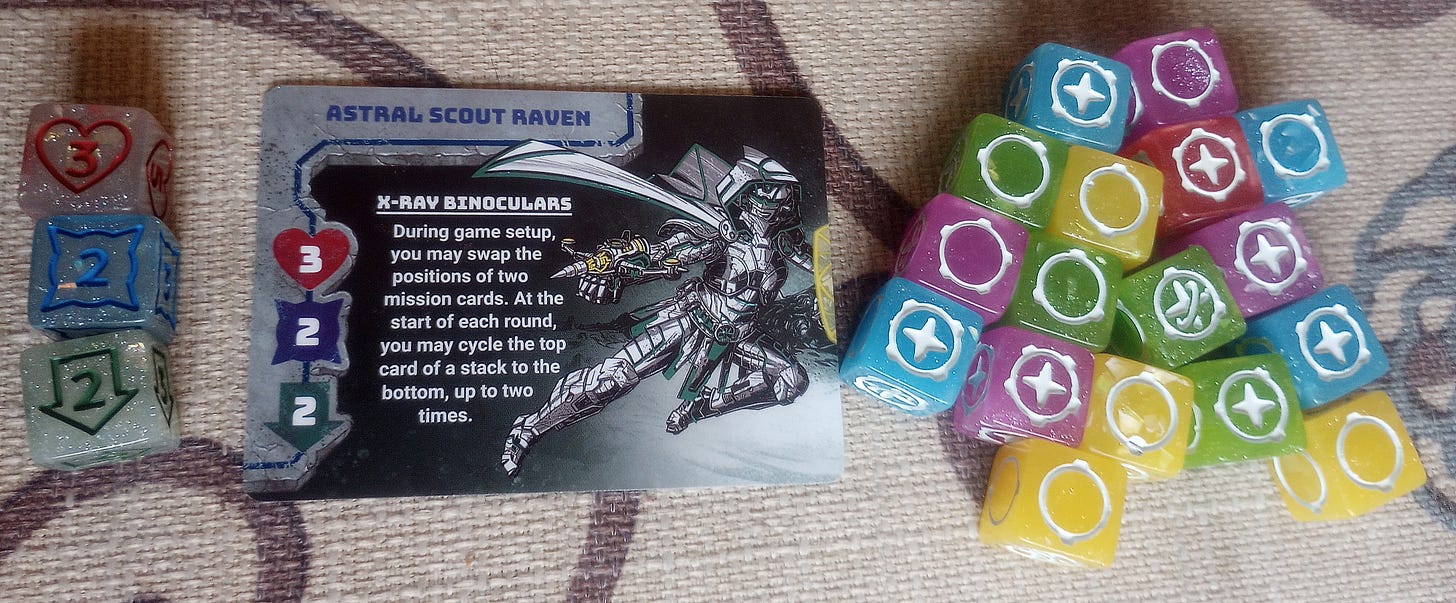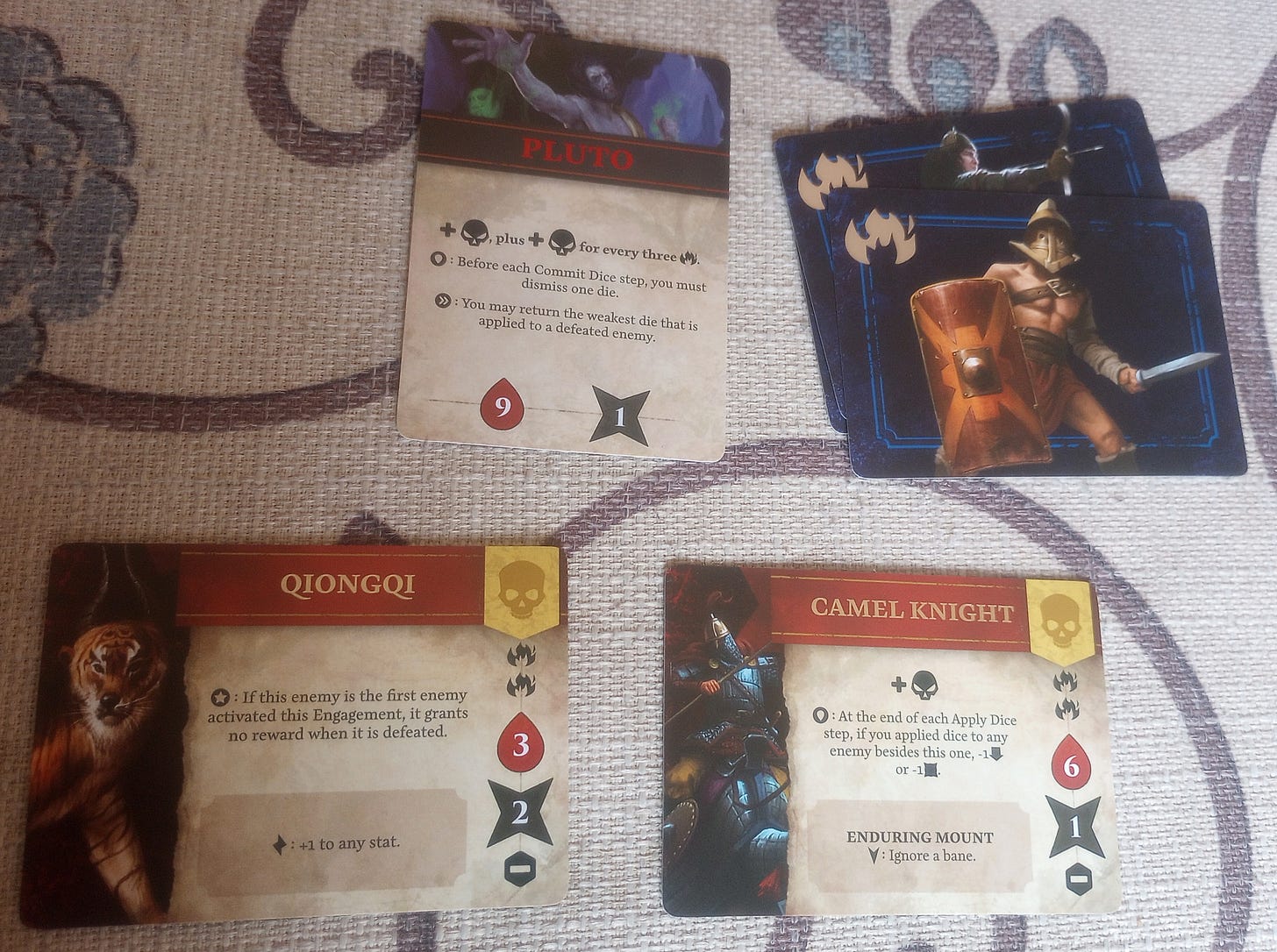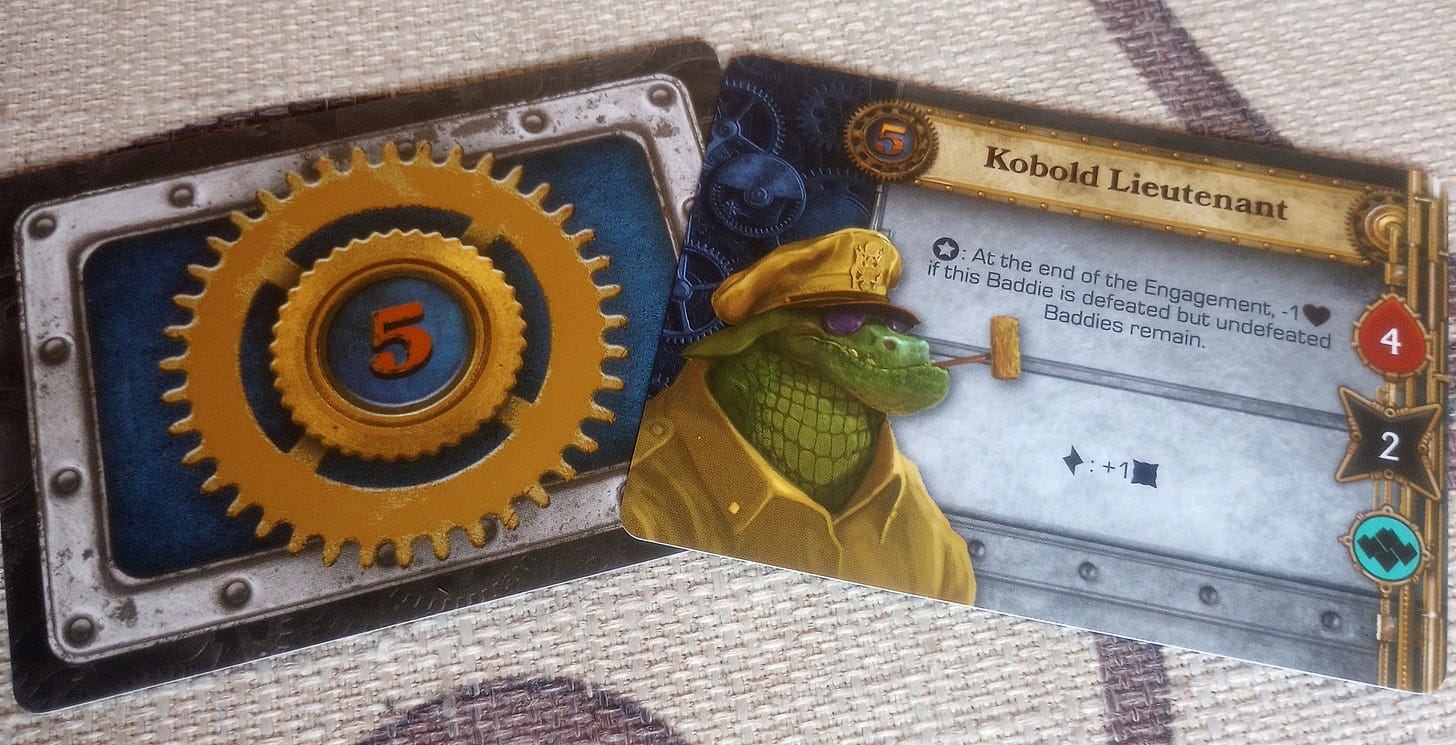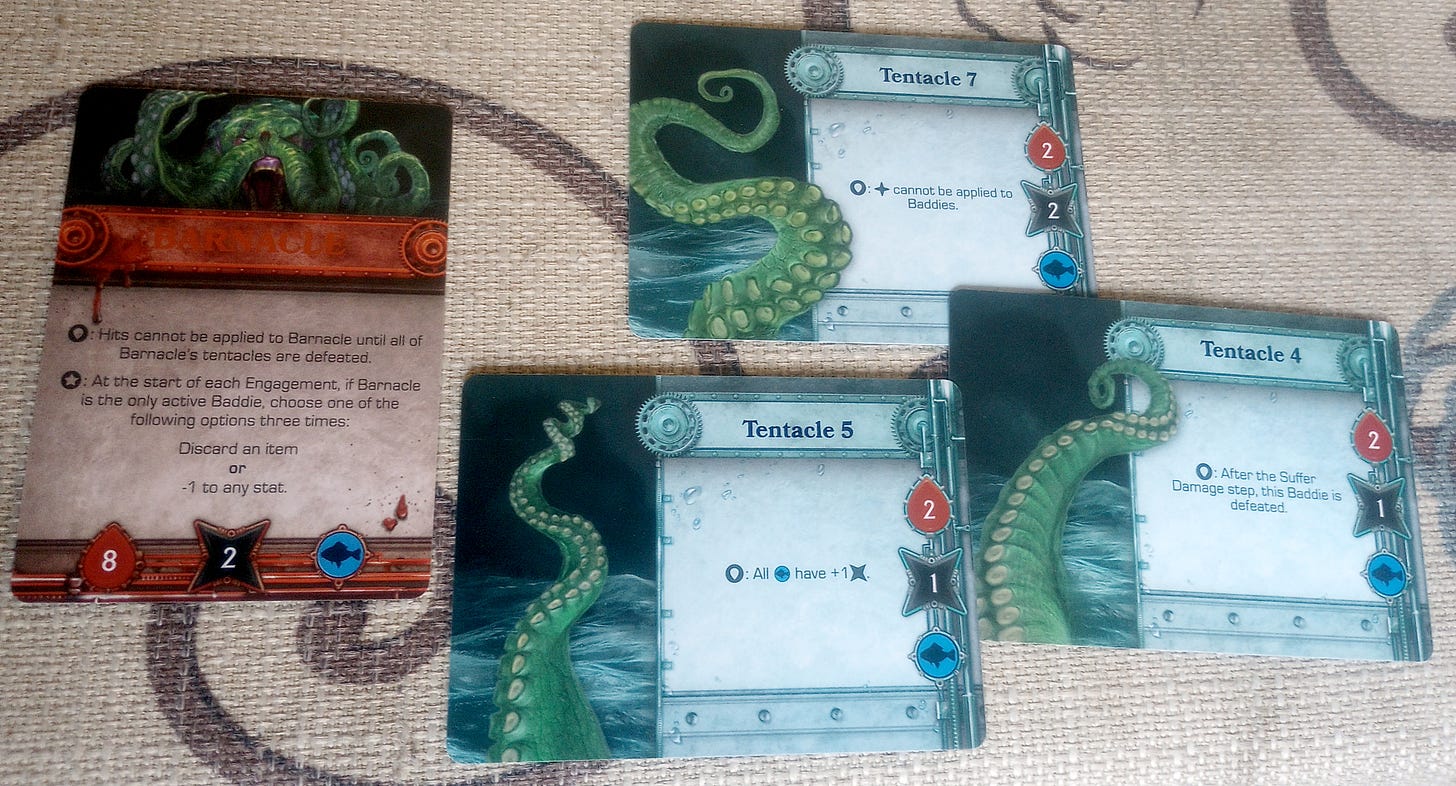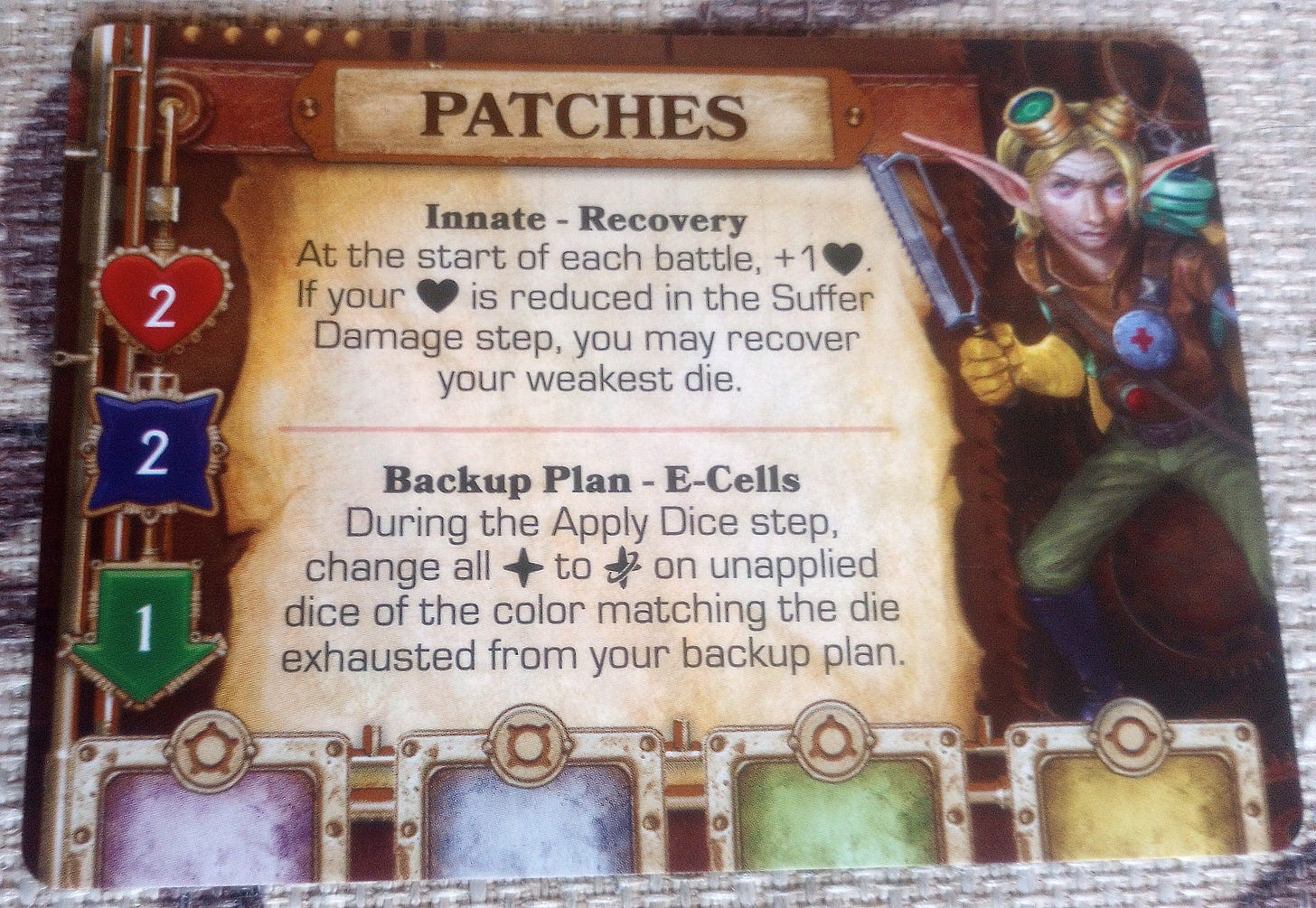I spent the majority of my professional life in 2023 working on The Elder Scrolls: Betrayal of the Second Era, which will be the biggest Chip Theory Games title to date upon its release. At the very end of the year, however, another project I worked on came out, and despite its small size, it’s one of my very favorite things I’ve contributed to during my five years with the company. It’s called 20 Strong, and in more ways than one, it’s a tasty, bite-sized version of what we’ve been doing at Chip Theory for years.
Hurried beginnings
20 Strong was an idea Chip Theory co-owner Josh Carlson had been noodling on informally for a while, but in the fall of 2022, it quickly gained an unexpected importance. Chip Theory usually plans up to three “slots” per year in which we debut games on crowdfunding, and we’d been planning on launching The Elder Scrolls campaign at the end of the year. As the expected campaign season arrived, however, it became clear that though the game was making progress, it wasn’t yet in a state that we wanted to publicly show. As anyone who’s seen the game’s campaign page can attest (we ended up bringing it to Gamefound the following spring, and late pledges are still available), it needed a lot of art, a lot of text, and a lot of clearly-defined gameplay to reach its eventual massive success.
Josh’s idea was that 20 Strong would be a much more manageable entry point for Chip Theory Games, both in terms of price and complexity. The base game currently sells for $30, a pretty low entry point for any board game company, let alone one with base games that regularly run for $150. It’s also pretty easy to learn. You can have a deck’s rules read and the deck itself set up in 10 or 15 minutes, and once you know how to play, you can reset a new game at the drop of a hat.
You may have noticed my mention of “a deck” as opposed to “the game,” which is one of the neat things about 20 Strong. Josh’s initial idea was that 20 Strong would be a game system as opposed to a standalone game. Every 20 Strong game involves three stat dice and 20 color-coded hit dice, each color of which has a specific number of hit, miss, and crit sides. On your turn – all 20 Strong content that currently exists is for solo-only, though we have ideas for co-op and even PvP entries later in the series’ run – you choose a number of dice from your pool to roll against enemy cards which you draw from decks that populate your play area. You apply the hits and crits to the cards as you’re able, rerolling dice you don’t wish to apply up to your strategy stat (which is determined by the facing of one of your stat dice). Then, you take damage from every card you couldn’t defeat, exhausting all the dice you rolled except for those you can get back via your recovery stat (also controlled by a stat die). If you can make it through enough of your deck, increasing your stats and adding powerful items to your inventory all the while, you can fight the boss and win the game.
These rules are very simple, but as I said, 20 Strong is a game system. The actual games take the form of individual decks with their own unique cards and rules. Each deck plays differently, allowing you to apply your knowledge of the 20 Strong ruleset to different contexts in a way that encourages variety and replayability – or at least, that’s what we write in our marketing copy (and I happen to believe it’s true!).
Josh had a solid idea for the deck to be sold with the core 20 Strong rules and dice (and eventually a counter chip, which was added via stretch goal after our fans told us it was weird for a Chip Theory game to have no chips). Because he sprung the idea on the development team not long before the campaign and he knew we were busy getting some of the company’s other projects into fighting shape, he originally planned on designing that deck, as well as decks based on two of our other games, Too Many Bones and Hoplomachus: Victorum, by himself. However, a couple of us on the development team had other ideas.
Pitching In
Josh demoed 20 Strong for the entire dev department, but two of us – Salem Scott and me – immediately took to the idea. I had an inspiration for what the Too Many Bones deck could be, and Salem had a similar brainstorm for the Hoplo deck. We volunteered to show Josh our ideas, and he greenlit them with a few wise addendums of his own – for example, he suggested that the Too Many Bones deck could differentiate itself from the other decks by keeping undefeated enemies in play after they deal damage to the player. This cooperation ended up really helping the project, as Josh wasn’t planning on having playable Hoplomachus or Too Many Bones decks ready to demo during the campaign. Instead, we could show off what all three decks were going to look like, which increased consumer confidence in the final product and jumpstarted the development timeline of the game.
One of the things I really like about the three inaugural 20 Strong decks is how they showcase the design sense of the person primarily responsible for them. Josh is a great idea originator, and his deck (revolving around an order of space-knights called the Solar Sentinels) is a perfect blend of simple and challenging, a great introduction to the rules of the system. Salem is Chip Theory’s most intensely thematic designer, always willing to go the extra mile for immersion, and they quickly went about adapting Victorum’s story about battling a mythical creature at the summit of Mt. Vesuvius into a challenging and visually-pleasing aesthetic (and telling Josh that, if it was OK with him, they were going to design mechanics for every single Hoplomachus hero and scion, including a couple that hadn’t yet been publicly announced). I like to work within the confines of a form, creatively transforming key elements into something that feels new, so I came up with a couple of unique hooks on the 20 Strong system and then spent most of my development efforts attempting to translate the way it feels to play Too Many Bones into the 20 Strong format. Together, the three decks are a great showcase of what 20 Strong can be right out of the gate.
Designing My Deck
If you know Too Many Bones (or if you read my series last year about the making of the game’s latest standalone expansion, Too Many Bones: Unbreakable), you know that the game’s conflicts run off of two main mechanics: a variable encounter deck and enemies (or “baddies”) with strengths described by a point system. The weakest enemies are one point, second weakest are three, and there are fives and 20s as well. I wanted to adapt the first mechanic, and Josh suggested we keep the first, giving Too Many Bones a more orderly feel than the Solar Sentinels and Hoplo decks, which can spiral out of control if you aren’t careful about which enemies you’re selecting on a given turn.
In Too Many Bones, instead of turns, your periods of play are broken up into days. Most days consist of a battle, which is one or more engagements against cards with baddie points equal to the day (for example, a Day 4 battle consists of four level 1 baddies, while a Day 6 battle would have one level 5 and two level 1 baddies). These baddies are drawn from the top of their respective decks, although players can scout these decks after a successful battle to cycle annoying enemies or give themselves more options to choose from. Battles basically proceed as normal per 20 Strong rules after that, except for one big difference: misses are placed into your hero character’s backup plan, a special power that can be used by spending the dice placed there. In Too Many Bones, each backup plan has a wide array of options; I decided that for the speed and simplicity of the game, each character would only have one backup plan, but you could use it multiple times in a single turn or battle, keeping the characters simpler but allowing players to strategically vary the scale of the power.
The single thing I probably spent the most time working on when designing the game was figuring out the baddie powers. I knew I wanted to work Too Many Bones’ differing baddie types into the gameplay, so I charted out an equal number of each type and then went about picking several of my favorite-looking ones of each type for inclusion (the Too Many Bones deck features larger, newly-colored and often redrawn art by Anthony LeTourneau, so I knew that every baddie I picked would be getting special treatment). Since the Too Many Bones fanbase is fanatical, I knew that for the game to feel authentic, translating the baddies’ skills into a 20 Strong format that felt reminiscent of the original would be important. Thus, for each baddie I included, I studied its skills and attempted to rewrite its “defining” skill in the language of 20 Strong. In Too Many Bones, for example, baddies with Hardy can only lose one HP per turn, so in 20 Strong: Too Many Bones, they can only have one die of a given color applied to them.
The other mechanic of Too Many Bones combat, the variable encounter deck, I had an idea for from the beginning. Essentially, I would make it optional, with a variety of mostly punishing mechanics that would make battles harder. However, if the player chooses to ignore it, it’s at their peril: for each so-called “tyrant encounter” mixed into the deck that isn’t completed at the end of the game, the game’s boss becomes more powerful (each boss gains power from the uncompleted encounters in different ways, from the troll Nom using them to gain hit points to the cards themselves flipping into tentacles for squid monster Barnacle). Though the majority of the encounters seem onerous (in addition to the tyrant encounters, there are “rewards” of questionable merit called Mohlnor encounters, along with unlockable treasure encounters), the experienced player can also manipulate the encounter deck to avoid or modify battles on difficult multiplier days to improve their outcome. The campaign was a minor but solid hit, and we set about turning it around to deliver in 2023.
Relearning Lessons
The playtesting and tweaking work of 20 Strong was compressed and busy, but pretty simple compared to most of our external playtesting work (compare that to the playtesting process for the Elder Scrolls project, which has lasted for more than six months). Each of the three decks got three weeks of playtesting, give or take, rotating between decks each week so changes could be made.
All of the decks were in pretty good shape, but the initial sessions allowed Shannon Wedge, who was managing the playtesting with Salem, to recommend a few core rule changes, as well as fine-tuning a few elements in each deck. As with the work I did on the Polaris Gearloc in Unbreakable, I got a bit discouraged when my extensive personal and internal playtesting of my deck showed me that it was pretty well balanced, but the players were finding mechanics too difficult or not worth engaging with. In particular, players were ignoring the encounter deck and claiming that some of the Gearlocs (particularly the medic character, Patches) were underpowered. I argued that people needed to understand the finer points of encounter manipulation and the necessity of using health as a resource to tank hits and recover more dice.
Shannon, Salem and I argued about it for a long time before each of them gave me a piece of valuable insight. Shannon reminded me that it doesn’t matter how good a design idea is; if people aren’t interacting with it, it isn’t working. Salem listened to my insistence that Patches had a good design and suggested a fix that would make it more obvious to players how to take advantage of him. With these two bits of wisdom, we were able to slightly retool a couple of mechanics – giving Patches dice autorecovery when he takes damage, and changing scouting to create a second “scouted pile” that allows players more choice of the enemies and encounters they face – and most of the big complaints about the deck went away overnight. Even as I become more confident in my design abilities, I am always stumbling upon new reasons to be humble, and Salem and Shannon have a unique way of understanding playtesters’ underlying issues with a game that has improved all of our products immeasurably.
Final Polishes
In addition to my design work, I also wrote the item names for Victorum and Solar Sentinels decks and named the characters in the Solar Sentinels deck. For Too Many Bones, I mostly stuck with existing enemies and items, although I did have a bit of fun with the tyrant encounters, infusing a bit more of the loopy TMB sensibility into the final product.
Beyond that, our graphics team did an incredible job bringing the decks into physical reality, creating new visual language that fits each deck like a glove (they also had to learn how to create foil layers for the cards, which was a challenge they rose to with aplomb). The game’s use of iconography is elegant, intuitive, and colorblind friendly, a must when colored dice are the most important gameplay element. The result is a product that really packs a crazy amount of visual flair into an affordable package, from the overall art direction from Melonie Lavely to the deck box design of Toujer Moua to the card layouts by Bree Lindsoe and Chris Beck (Chris also did the art for Josh’s Solar Sentinels deck).
The rollout has not been altogether smooth, as is always the case when a new product (made with a new manufacturing partner) comes out. In particular, the dice have an unpleasant smell that goes away once they’re aired out, and we’re definitely looking at solutions for that issue when the game goes back to print and when we debut new decks later this year (I’m working on one of those, too!). However, the game has been warmly received overall and is selling extremely well, and I’m proud to have my name on a product like this. Chip Theory’s calling card is complexity, but 20 Strong’s elegance is in its simplicity, and working on a game like that is a challenge all its own.
———
What else is good on the internet?
Here is a great collection of brief 20 Strong How to Play videos compiled by our social media manager/video editor Andrew Santoro.
———
From the field
If all that up there sounded good, why not buy a copy of 20 Strong? It’s just $30, and the Too Many Bones deck is $20.
———
Follow me on Twitter @RTHowitzer, read my Letterboxd reviews @mrchumbles, listen to my Star Trek podcast at outofcontreks.podbean.com, or email me at outofcontreks@gmail.com.




